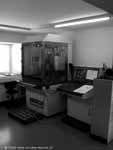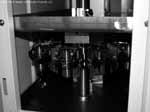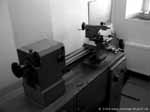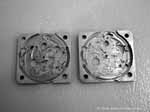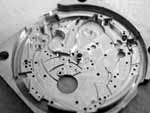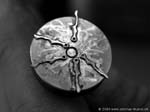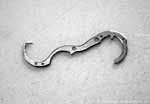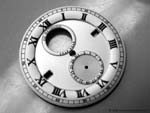The
X-Files
The Quest for a Mechanical Rapprochement of Quartz-Accuracy
An inside report of De Bethune SA, La Chaux l'Auberson
by Magnus Bosse, November 2006
Part
2
click on small images to view full-size ones!
2.
Watchmaking at De Bethune today
2.1 Vertical integration bottom-up in the smallest
possible space!
Once you enter the De Bethune building, the impression of traditional
handcrafting in the world of watchmaking will completely vanish:
What you see is computer-controlled machinery everywhere, operated
by technicians. CAD, CNC and spark erosion machines, all magically
selecting and adjusting their tools, fill the rooms on the first floor
(large image and small images, left and middle). Highly sterile and
dust-clean working benches help to foster the feeling of high-tech,
automated production of part. Is this the birthplace of reportedly hand-made watches?
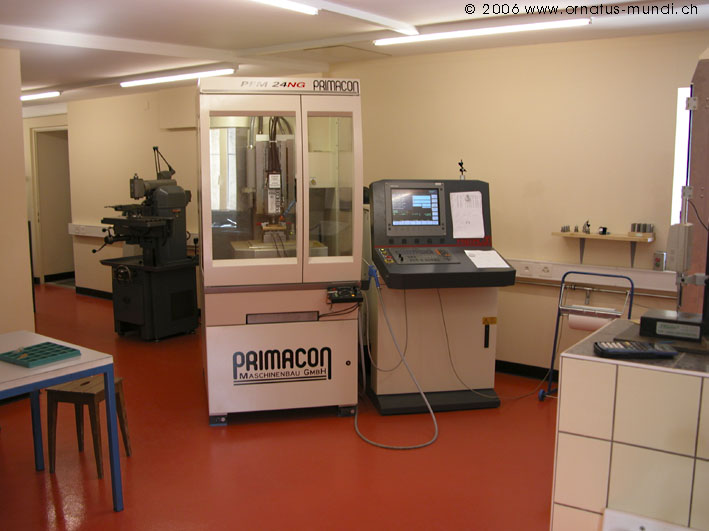
However, there are also traditional lathes still in use, so this should reassure the startled audience. With this equippment, almost all components necessary to build a watch can be produced on a raw state.The precision aimed for with omitting hand-work in the initial production procesess (a strategy now almost universally employed in the watchmaking industry) lies in the range of few 1/1000th of a millimetre. Not surprisingly, the tools used to machine the parts are unbelievably small in scale. Here a CNC moulding cutter is shown (right), side-by-side with a normal drill we all know from the do-it-yourself markets (left):
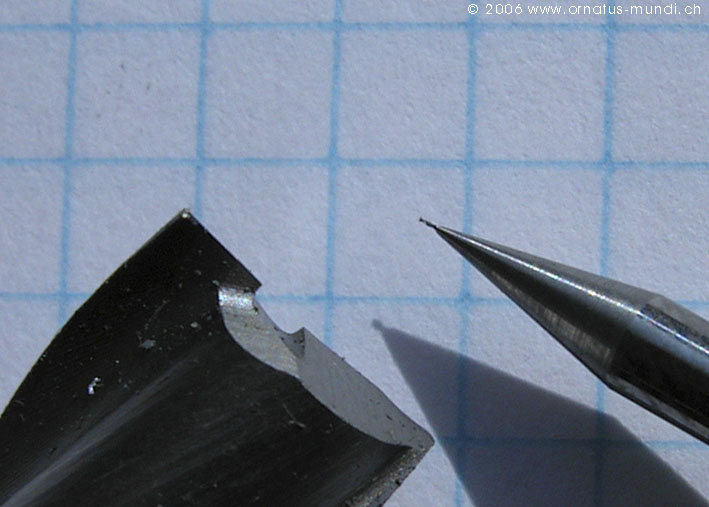
This machinery
"creates", so to speak, the raw material
for the movements parts, which are then finished by hand by
the master craftsmen - one floor up! But let us take a closer look
at the plates, bridges and levers that come out of the black-box
machinery:
The sophisticated tools allow for a great deal of flexibility, combined
with the necessary precision. Note, that base-plates, cocks, bridges,
but also wheel blanks can be manufactured
(large image). Of note, different materials are use, such as brass
(plates and bridges), red gold (wheels), steel (levers and pinions)
or titanium and platinum (balance components). The
plates are made in a two-step process: Brass blankets are pre-cut
with spark-erosion first to shape the raw plates, and then CNC machines
carve the subtle layers and drill additional whole and structures
not possible with the former
(small images, left: left, plate after spark erosion; left: plate after
CNC treatment). The result is a relatively complex architecture (small
image, middle). As a true manufacture, De Bethune is able to produce
entire gears consisting of wheels mounted on pinions. The combination
of red gold (wheels) and steel (pinions) are a further sign for the
watchmaking class the company is striving for (small image, right).
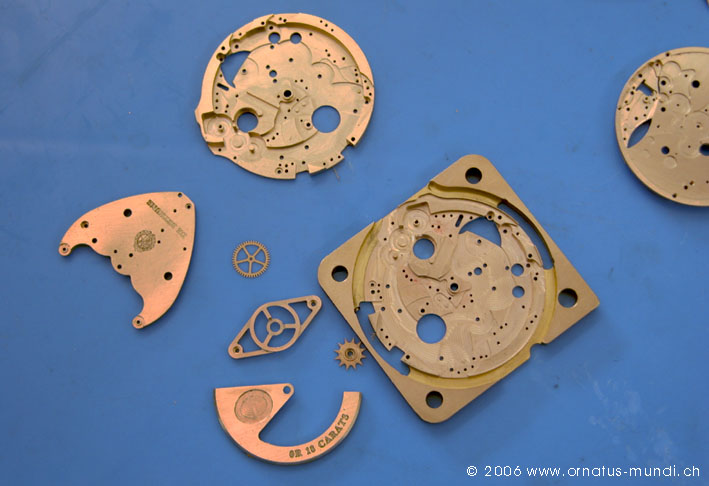
At this point we leave the first floor, go one staircase up and enter the finishing department. Dedicated craftsmen devote their skills to apply the hand finishing, which by no one else then the noted watchmaker extraordinaire and eccentric Philippe Dufour is called the "soul of Swiss watchmaking". Now lets spend a few minutes to watch the polisher doing his magic:
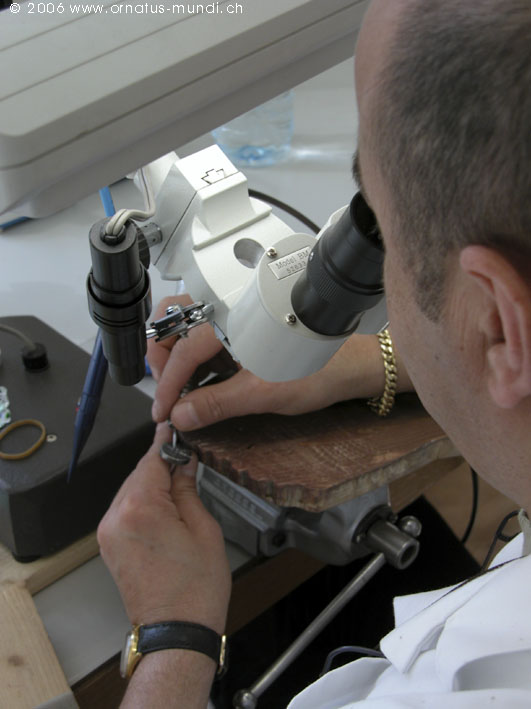
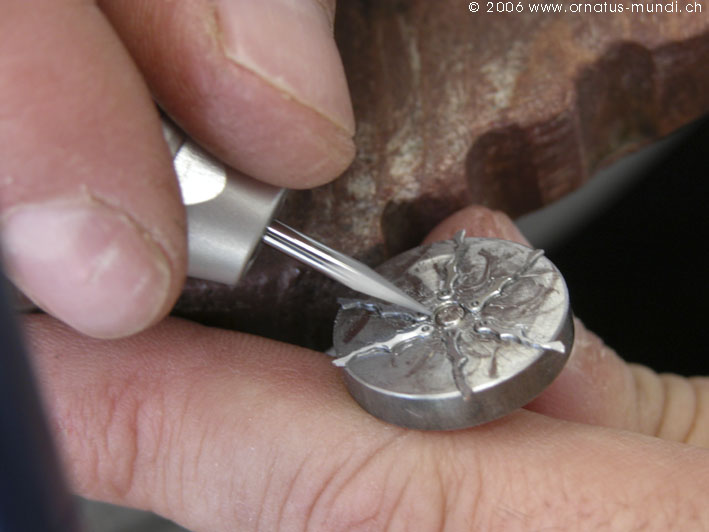
But this
alone is not responsible for the allure of De Bethune timepieces
- every effort to create ultimate quality would be lost if the dials
and hands would not be made with adequate stringency. Dial and hands
represent the
"face" of every watch, and to me the proverb of "a
watchmaker has to sell the dial, then 50% of the deal is done"
has some undisputable truth.
In La Chaux à l'Auberson, the dials are made of 18kt gold, hand
guilloched (if
applicable; and this is done out-house) and then silvered. The indices
and numerals are printed onto them using a complicated, highly demanding
multiple step printing method, resulting in an almost 3-D look. The
dials of the more complicated pieces consist of several separate elements
and layers, which require maximum precision while being crafted (small
images below, left). But even the simpler dials show the mastery of
the process (small images below, right).
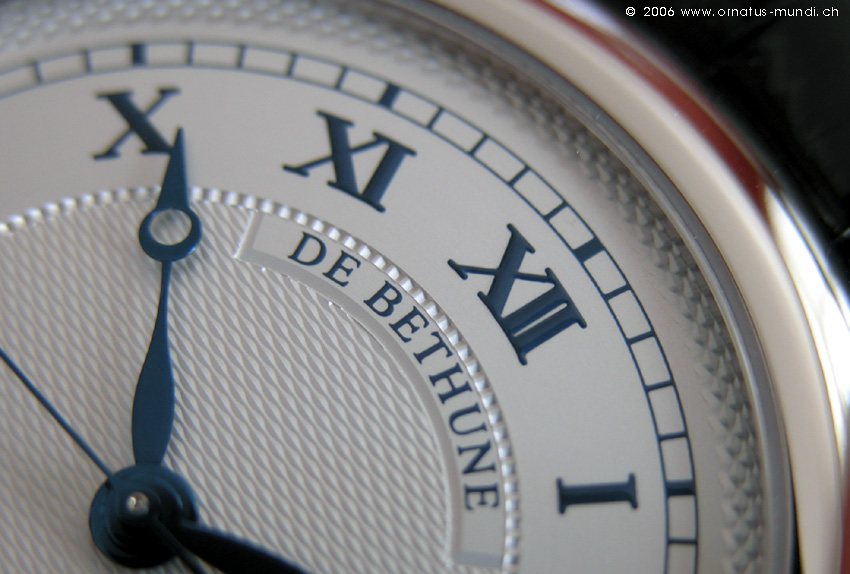
Once the parts are ready, its time to change the room and enter the watchmaker's reign. 20 watchmakers, most of them in their 20s or 30s, are assembling the complicated De Bethune watches using the parts produced under the very same roof. The watchmakers are all "polyvalent", as De Bethune describes it, meaning that they are qualified to execute all necessary steps to build a watch, and depending on the current needs they perform these. Before the parts are handed over to the watchmakers, a quality specialist checks each and every component for specification and finishing (small images below, left). Only with her "placet", it is transferred to a watchmaker's bench and carefully fitted in a De Bethune movement (small images, middle). Finally, the finished watches are checked for timekeeping and function, of course, but also for finishing using a binocular that also is equipped with a timing device (small images, right).
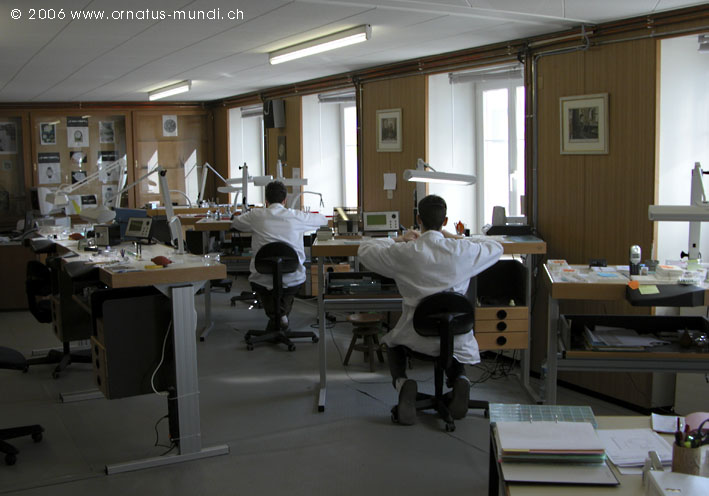
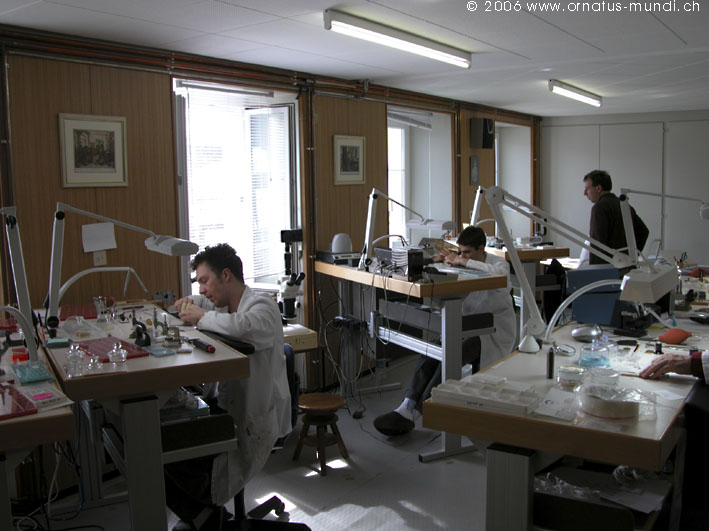
Denis
Flageollet of course from time to time disappears - necessarily, as
he enjoys the creative moments in his "chamber of secrets",
as his own, fully equipped atelier is called. It is located under
the roof of the manufacture, as if the proximity to the sky would
help putting ideas into concepts and finally into working mechanisms.
Lathes, files, drilling tools and timing machines allow the creation
and testing of entire movements in complete isolation.
When I visited De Bethune in 2005, the prototype of the new automatic
calibre laid on the bench, ticking quite
contentedly. Of course, photos were not allowed, but Mr. Flageollet
talked with great pride about the new movement, and considered it
a corner stone of the manufacture's future - a fact that was underlined
with the intense reconstruction work that was underway in La Chaux
(small pic). If he is right in his evaluation - well, make up
your own mind after we tackled the entire collection (chapters 4 &
5)!
Naturally, this is only a part of the story of De Bethune's excellency. The next chapter guides you through the marvellous movements, and opens some X-Files!
